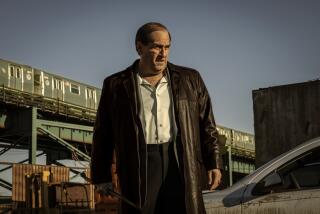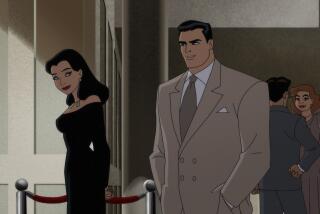Marvel Hopes Aging Superheroes Come to Comics Industry’s Rescue
- Share via
NEW YORK — Intolerance is on the rise this fall. A sinister, neo-Nazi group is whipping up support in the cities. Hatred reigns supreme.
Sounds like a job for Captain America.
Trouble is, the star-spangled warhorse has forgotten who he is when the good guys come calling.
“I’m not a captain of anything. I’ve never even been on a boat,” insists Steve Rogers, a loving, mild-mannered husband and father hurrying to his steelworker job in Philadelphia.
The amnesia-ridden Captain is the latest attempt by Marvel Comics to reintroduce more than a dozen of their classic superheroes with spanking new origins, stronger female characters and deeper emotional baggage.
“You’re needed again, you know,” one man pleads. “Now. More than ever.”
Apparently, Marvel Comics still needs the Captain, too.
As the country’s top comics seller, Marvel is gambling that fans will snap up the ‘90s version of Captain America and three other flagging vintage titles, thereby repositioning both the company and the heroes for a new market.
So Captain America, the Avengers, the Fantastic Four and Iron Man--a total of 13 heroes in all--are being overhauled after having met their apparent doom this summer at the hands of the supervillain Onslaught.
The apocalyptic final panels of the battle seemed to result in the largest mass cartoon slaying in comics history. But have no fear, the brightly clad heroes return this month, each beginning with a No. 1 issue.
But Marvel promises they’ll be a far cry from the one-dimensional characters who first emerged during the Cold War.
The new Captain America will be a hero-as-metaphor, a superpower who has forgotten his former greatness and wanders a dark world, desperate to recover the ideals he personifies--patriotism, loyalty and equality.
Jazzing up the dusty heroes already seems to be paying off. The final showdown against Onslaught has been flying off comic shelves since its debut on Aug. 7.
A heroic death is hardly a new phenomenon in comics history. DC Comics, the No. 2 publisher behind Marvel, killed--gasp!--Superman in November 1992, only to bring him back to Metropolis after a nine-month hiatus.
The gambit worked. According to the trade publication Comic Buyer’s Guide, DC shipped 4 million copies of the comic detailing the Man of Steel’s demise. In some places, the price leaped to $30 that same day.
Spurred in part by that success, comics began a joyous upward streak. By some estimates, 1993 sales broke through the $1 billion mark for the first and only time.
But since then, sales have dropped by a fourth and one out of six comic book stores has closed. Estimates of last year’s sales range between $400 million and $700 million, far less than the high of three years ago.
Part of the reason is that comics are no longer cheap entertainment. Most titles could be snapped up for a dime a pop a few decades ago, but soaring paper prices have pushed today’s average cover price closer to $2.
Video games, television and other high-tech toys that target teens also lure away the primary audience. So publishers seeking to attract more sophisticated and better educated readers are tackling social issues and giving more frailties to their otherwise invincible caped crusaders.
But while Marvel is betting that a little superhero bloodletting might just be the key to attracting kids back, others are skeptical.
“They’re trying to symbolically bring a strong cast of characters back in front of the public’s consciousness with a pretty gimmick-orientated idea,” says Jerry Weist, a comic arts specialist at Sotheby’s. “I mean, talk about beating a dead horse.”
Three decades of the same caped crusaders is enough, says Weist. “It’s time to let go of these costumed superheroes, but the companies are too afraid and are clinging to them.”
But Marvel argues the super face-lifts are gimmick-free.
“I don’t think getting rid of them is the solution,” says award-winning artist Jim Lee, 32, who oversaw the rebirth of the Fantastic Four and Iron Man. “If you go back and reread the original, it just feels like your dad’s comics. I think people thought they were getting a little long in the tooth.”
Retooling Baby Boomer generation heroes for Gen X may be sacrilegious to some comic purists, but the brawny classics have won the test of time, says Bob Harras, editor in chief of Marvel Comics.
“There is something inherently strong about them that I don’t think they’re linked to their time,” Harras says.
More to Read
The biggest entertainment stories
Get our big stories about Hollywood, film, television, music, arts, culture and more right in your inbox as soon as they publish.
You may occasionally receive promotional content from the Los Angeles Times.










